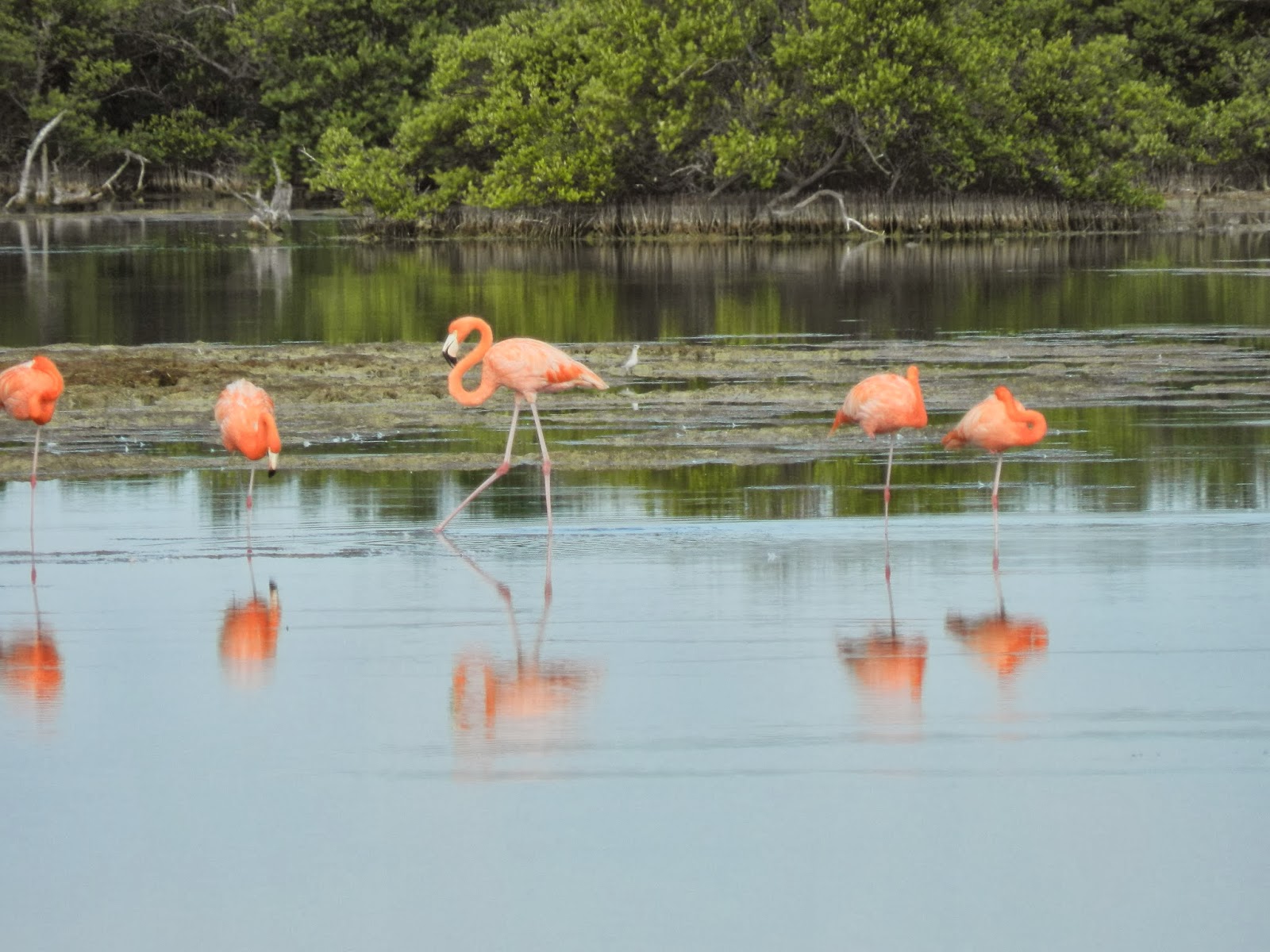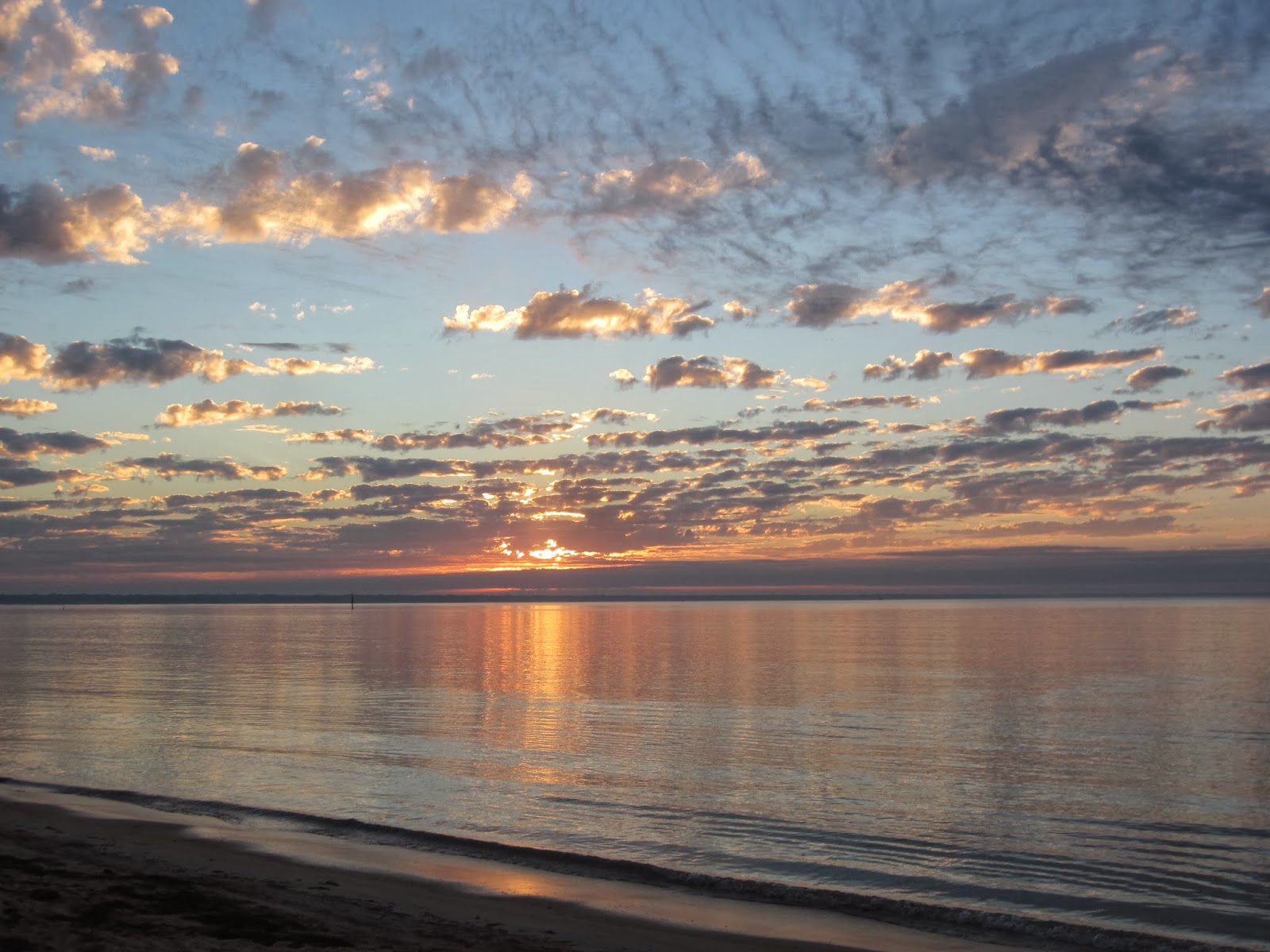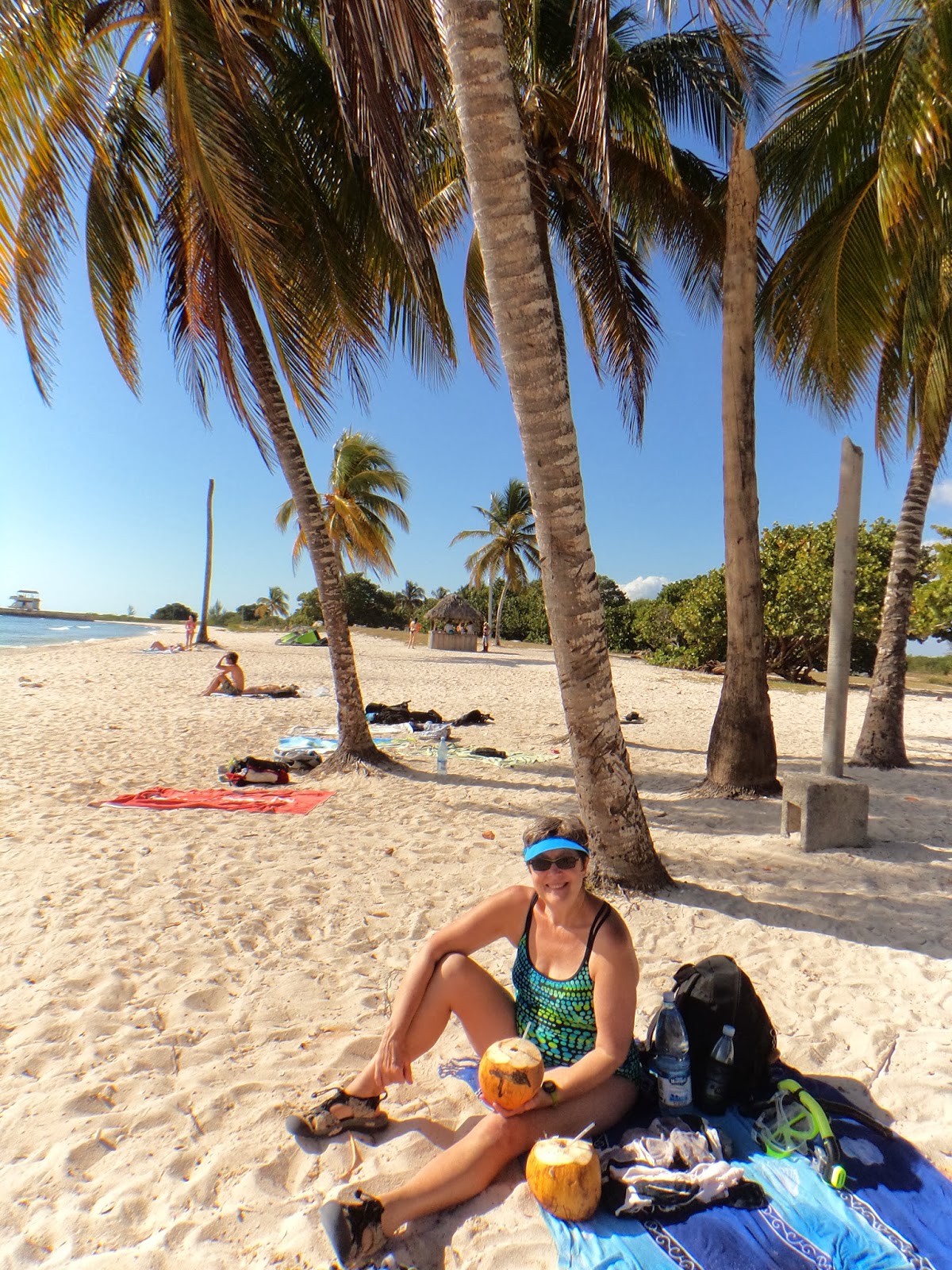Playa Larga, our next destination, is on the Bay of Pigs (of 1962 Cuban Missile Crisis fame) and is adjacent to the Ciénaga de Zapata which is a UNESCO Biosphere Reserve. The park includes a forested area, a swamp, salt pans and a wetland. We went there to look at the birds and do some snorkelling. We stayed in the small community of Caletón.
When the bus let us off at the intersection in Playa Larga we were immediately accosted by people wanting us to stay at their casa or take their taxi. We chose this bicycle taxi to take us to casa El Caribeño, where we had made a reservation.
When we arrived at the casa we found that there was no room at the moment, but across the small street and down a couple of houses was an associated casa, El Cocodrilo, where we would stay, and we were told we could use the beach in front of the casa El Caribeño.
 |
| Casa El Cocodrilo |
 |
| In the living/dining room with the mascot, Señor Cocodrilo dressed in the colours of his namesake Matanzas province baseball team |
 |
| Lobster supper at the casa - notice that every meal in Cuba comes with at least 3 starches - here we have rice, fried potatoes and plantain. We also had salad and a fruit plate. This was supposed to be a serving for one person as we always order only one dinner and share it. Bread too in the basket. |
 |
| Walking on the beach west of casa El Caribeño |
 |
| The view in front of Casa El Caribeño |
We went on two birding tours while in Playa Larga, the first to Salinas, the salt wetlands, to see water birds. Bengt and Kerstin, from Sweden, joined us. We rode in one of the worst old American cars we encountered in Cuba. It had no brakes, the exhaust leaked into the interior of the car, heat almost scorched Evanna's knees in the front seat, and we had to push it once to get it started as the driver flooded the engine and couldn't get it going again.
 |
| Kathy, Bengt and Kerstin in the back of the taxi |
The wetlands were extensive and filled with water birds and shorebirds. Flamingoes were the main attraction but we also saw a few roseate spoonbills, several different herons and egrets, some yellow legs, northern shovelers, coots, cormorants, a wood stork, an osprey and some white pelicans.
 |
| The flamingoes here were very orange and the lighter ones are the juveniles |

 |
| Bengt and Evanna standing in the shade as the temperature was +30 C |
The following day we went on a birding tour in the forested part of the reserve and this time we joined a young Dutch couple who had a rented car. We saw the top four endemic species we were hoping to see and a few others as well. Our pictures of the Cuban Toady and the Bee Hummingbird (smallest bird in the world) were not very clear but we did see them. Gorgeous little birds, they were!
 |
| Cuban Trogon, known locally as tocororo - the national bird of Cuba |
 |
| Cuban Parrot |
 |
| Cuban Pygmy-Owl |
 |
| Cuban Green Woodpecker |
We spent two days snorkelling in the beautiful clear waters of the bay at a site called Punta Perdiz, about 15 km southeast of Playa Larga. To get there we took this taxi which was recommended by Bengt. It was a bit of a splurge but we enjoyed the ride.
 |
| A 1929 Ford Model T we were told. E did not actually drive it! |
 |
| The bar and shade structure at Punta Perdiz - we opted for shade as our skin was still pretty white |
We took a small underwater camera with us and were able to get some fairly decent pictures of the fish and coral.
 |
| Parrot fish |
 |
| Sunrise from the beach in front of our casa |
After 5 days it was time to move along to another location - Playa Giron, where we also went snorkelling and spent time on the beach.
 |
| Leaving Casa El Cocodrilo on a bicycle taxi to go to the bus stop about a kilometre away. Our hostess and her grandchildren are seeing us off. They laughed a lot at the pantomime supplements to our meagre Spanish skills. |
 |
| Coco Beach at Playa Giron, enjoying a young coconut |
 |
| The inadequate shade structure at Caleta Buena, where we went swimming and snorkelling |
 |
| The lagoon at Caleta Buena |

























No comments:
Post a Comment